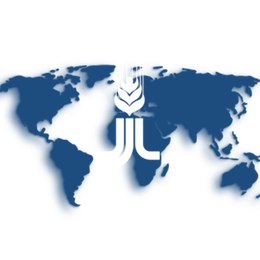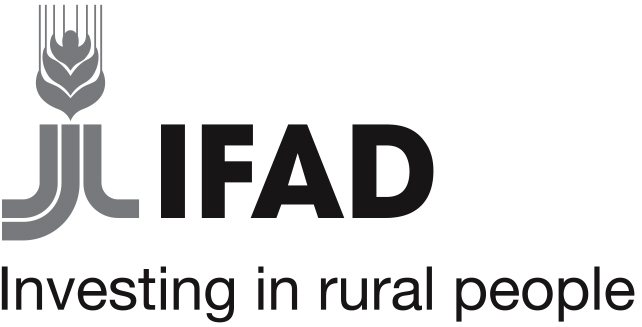Developing a business case for safe recovery of water, nutrients and energy
There is great potential to close the nutrient and water loops by creating economically viable businesses that process agricultural and domestic waste products for agricultural and energy production
BACKGROUND
However, despite its economic potential, Resource Recovery and Reuse (RRR) is often perceived as a public service, and waste is overlooked as a resource. Promoting RRR can demonstrate how processing agricultural and domestic waste products can be an economically viable business.
WHAT’S INVOLVED
Resource Recovery and Reuse
Processing waste products can close the nutrient and water loops in low-income countries with intense competition for resources.
Developing partnerships
Preparing business models and feasibility studies has attracted keen interest from a variety of stakeholders. This analysis has also catalysed additional follow-up grants.
EXPLORE THIS SOLUTION
The Resource Recovery and Reuse Project can offer
- business models and feasibility studies for waste processing; and
- experience catalysing additional grants

Countries involved
Bangladesh, China, India, The Philippines, Sri Lanka, Thailand, Viet Nam, Botswana, Kenya, Rwanda, South Africa, Uganda, Morocco, Burkina Faso, Ghana, Brazil, Mexico, Peru
Project partners
IFAD, International Water Management Institute (IWMI)
Project dates
2011- 2014
Share this solution
Bookmark this solution
BookmarkShow Full Solution
Summary
Recovering water, nutrients and energy from different waste streams is a high priority in low-income countries. However, despite its economic potential, Resource Recovery and Reuse (RRR) is often perceived as a public service, and waste is overlooked as a resource. Moving beyond technical solutions, this grant aims to increase the scale and viability of businesses that productively and safely reuse water, nutrients and energy from various waste streams.
Challenge/Problem
Vast amounts of waste generated both in urban and rural areas pose a serious threat to air, soil and water purity, especially in developing countries. Disposing untreated waste or releasing untreated wastewater into freshwater sources can aggravate environmental pollution, facilitating the spread of various waterborne or airborne illnesses.
There is great potential to close the nutrient and water loops by creating economically viable businesses that process agricultural and domestic waste products for agricultural and energy production. However, to date, such efforts have often been limited in size or duration, partly because waste is not viewed as a resource. Additionally, natural resource management – in this case, water and sanitation – is often heavily dependent on public subsidies.
Solution
Recovering and reusing water, nutrients and energy not only significantly enhances the supply of these valuable economic assets, but also improves sanitation and ecological conditions. Nutrients and fertilizers recovered through recycling organic waste and filtering wastewater are essential inputs for increasing crop biomass, timber output and the production of aquatic crops. Effluents and treated wastewater are important for agricultural irrigation and enhancing environmental systems, while energy recovered from recycling waste and wastewater is key to improving energy supply in remote rural areas. In light of the increasing scope of environmental and health problems triggered by inadequate sanitation, the UN Sustainable Development Goals (SDGs) also underline the need for improved sanitation measures in developing countries.
This grant is part of Resource Recovery and Reuse (RRR) Project, a subprogram of the CGIAR Research Program on Water, Land and Ecosystems dedicated to applied research on the safe recovery of water, nutrients and energy from domestic and agro-industrial waste streams. The goal of the grant is to provide the best RRR business case options to producers and consumers, emphasizing cost recovery and the mitigation of possible risks to the environment and human health. Capitalizing on the opportunities that waste resources offer, the project provides science-based solutions to reduce the negative urban footprint on ecosystems and human health through innovative market-driven investments bringing nutrients, water and energy back into the production cycle. The project involved different lines of action research: (i) developing and testing scalable, replicable and sustainable RRR business models, (ii) assessing and mitigating risks from RRR for public health and the environment, and (iii) supporting public and private entities with innovative approaches for the safe reuse of waste.
Results
By adding a business dimension to RRR, the project catalysed new thinking about the potential of waste. Research findings have facilitated follow-up investments by producing a catalogue of RRR business models and feasibility studies that will guide both the set-up and out-scaling of the projects.
- Sixty business cases from 24 countries around the world were analysed and conceptualized under 21 models. These main project results will be published by Earthscan (Taylor & Francis) and placed in the public domain.
- Outreach to stakeholder platforms were organized in Dhaka, Kampala, Kumasi and Hanoi to discuss valorization options, while the replicability and scalability of business models were analysed with entrepreneurs and public entities in Kampala, Bangalore, Hanoi and Lima.
- The project catalysed follow-up grants and donor interest from the Swiss Agency for Development and Cooperation (SDC) and the European Union (EU), worth over US$2.8 million, while other donors, such as the Water and Sanitation Programme of the World Bank (WB-WSP), started testing the local feasibility of the models in India.
- CGIAR research programme on Water, Land and Ecosystems has taken up the issue of RRR as one of its flagships, channelling approximately US$3.6 million annually to develop additional knowledge.
Lessons Learned
Because there was not a well-established base of literature for analysing empirical RRR business cases and developing business models, a framework to guide the research needed to be developed. This process was continuously adaptive and iterative, and the time required to develop the framework delayed the review of the business cases.
Another constraint to analysing and developing RRR business models was related to data accessibility. A significant number of reuse activities occur in the informal and private sector, where there is very limited documentation and available data. In the case of large-scale businesses, issues related to intellectual property restricted access to data and often required non-disclosure agreements. These constraints resulted in the need for a 9-month extension in the timeline for the completion of the project.
Next Steps
The resulting analysis of business models, which either increase cost recovery or generate profit, has garnered keen interest from a myriad of stakeholders (e.g. donors, sanitation service providers, entrepreneurs) for more feasibility studies and the actual implementation of RRR business cases, indicating great potential for scaling up.
A key activity will be to present research results in training materials for various business schools. This will further mainstream the implementation of successful business models for reuse, together with private sector investors and entrepreneurs, urban and peri-urban framer associations, agriculture and health departments, and municipalities in various developing countries.
Last update: 23/01/2019


